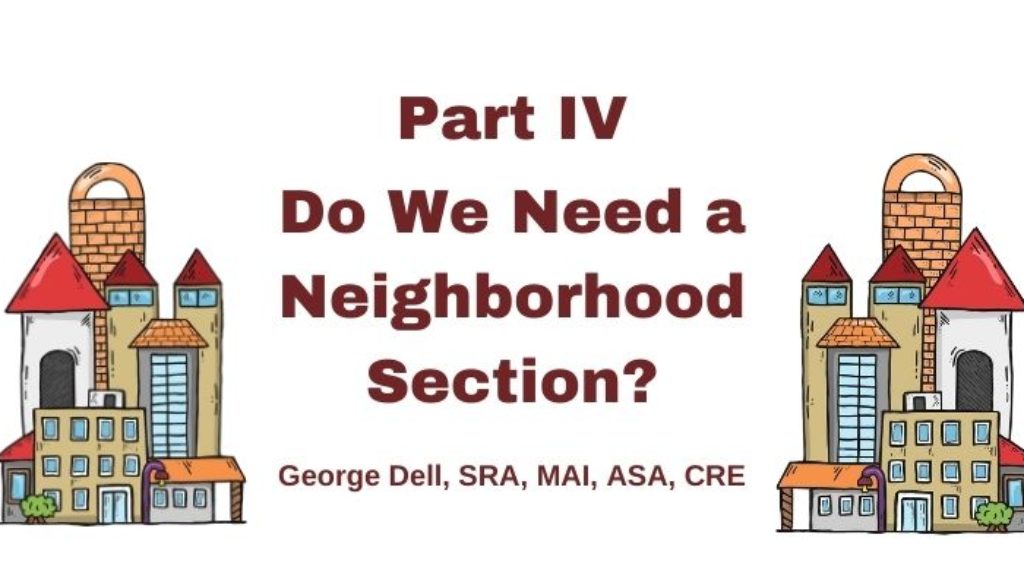The neighborhood section of appraisal reports is pretty much protocol. We have asked how a report on the neighborhood may or may not contribute to valuation value or reliability (risk) estimates.
We continue to consider how traditional practice helps or hinders adoption of modern process technologies. As always, we have found it is important to be clear when we speak of the analysis (development) or the reporting of results.
Traditional appraisal methods focus on the neighborhood, picking comps, making adjustments, and delivering a static (printable) report. (Market analysis is an afterthought, done after comps are picked.)
Modern data-science-based methods focus on the optimal data set, market analysis, predictive methods, and dynamic, user-oriented dashboards. (Illustrative comparables can be selected after the market analysis is done, providing mental metaphors or a simple story.)
We must also distinguish one more thing. Are we describing the neighborhood, or are we analyzing the neighborhood? Vintage (judgment-based) methods tend to emphasize the describing, while predictive methods emphasize the analyses.
We have discussed the traditional reporting section customs regarding neighborhood descriptions in Parts I to III of this topic. In the past, there was little or no analysis. This was because of the lack of data on neighborhoods. (Census tract information tends to be more demographic in nature, not directly convertible to value calculations, analysis, or opinion.)
On the other hand, in the days of paper data, I did find it valuable to ‘drive the neighborhood’ in order to get a feel for it – and to help cut things down to three or five “similar” comps. My personal judgment was clearly enhanced visually – especially when I was new to the business. It was the vintage substitute for what we today analytically call abductive reasoning, to establish an “acceptable scope of work.”
So why, when and how do we need to analyze a neighborhood? First, it needs to be to the goal: the most probable sale price of a particular property. This is judged by ‘comparable’ sales of similar properties. What is the connection?
Why: Properties will be similar in respect of type, time, contract, and features. Only if a ‘similar’ sale is in another neighborhood will we need neighborhood descriptions. But we do not really compare neighborhoods! We compare the particular property ‘elements of comparison’ as between one location and another location. The neighborhood mix of complementary uses are not the issue. It is the subject CMS (Competitive Market Segment)© we compare. Other property uses, or mixes of uses are fully reflected in the CMS location differences (spatial adjustments).
When: The only time we need to compare neighborhoods (adjust for location), is if we need ‘comps’ from another neighborhood. Again, we do not compare neighborhoods – only the property type within each neighborhood.
How: Actually, a neighborhood (a group of complementary land uses) is not really analyzable. All we can really do is describe and quantify. We have no need to compare neighborhoods. We have no need to adjust for ‘neighborhood.’ We only need to adjust as between locations. Worse yet, location adjustments may or may not have anything to do with the neighborhood.
The neighborhood can help our abductive reasoning to identify our intended scope of work. The neighborhood is seldom the same as the market area. It is seldom the same as the relevant district. Comps usually come from inside the neighborhood, and outside the neighborhood. Section
